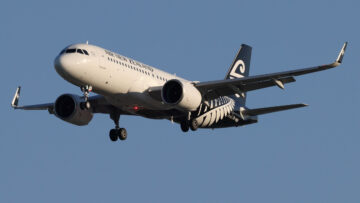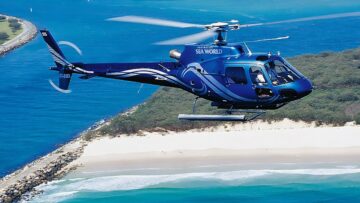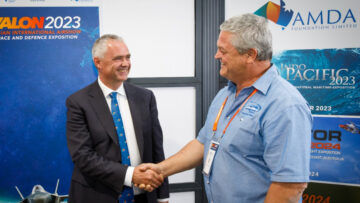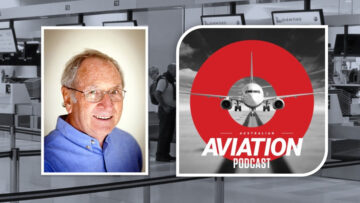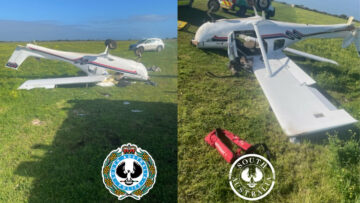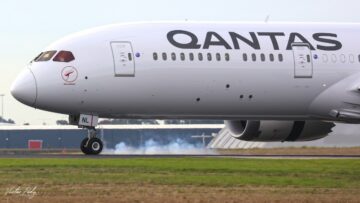
Sydney Airport’s latest move to operate with just one runway ended well before its evening peak on Friday, leading to minimal issues.
The close call came a week after 170 flights into and out of the NSW capital were cancelled last week, just as NSW’s school holiday getaway began.
Sydney operates two parallel runways 1,037 metres apart that allow two aircraft to be on the final approach simultaneously, but only operating in visual meteorological conditions.
Crosswinds, which can affect an aircraft’s flight path, make having two aircraft flying close together dangerous.
Australian Aviation understands the latest shutdown is not thought to have directly led to any cancellations or significant delays.
While Airservices, which oversees air traffic control, insisted the shutdown was due purely to gusty, westerly crosswinds, it came after a difficult week for the organisation.
On Wednesday, Australia’s biggest pilots’ union claimed air traffic control staffing issues are making skies less safe for pilots and passengers.
The Australian Federation of Air Pilots (AFAP) told Australian Aviation that its members have encountered “chronic” and “systemic” staffing problems at Airservices dating back to before the COVID-19 pandemic.
PROMOTED CONTENT
It followed reports emerging that there were 340 instances of “uncontrolled airspace” from June to April 2023, with Airservices admitting to “staff availability issues”.
Those issues then re-emerged last week after aircraft had to “self-separate” from each other and rely on radio broadcasts rather than centralised information from air traffic controllers.
Switching to TIBA – traffic information broadcasts by aircraft – leads to delays and cancellations, with Virgin’s policy not to operate in TIBA airspace when possible. Airservices, however, insists its TIBA workaround procedure is both safe and “internationally recognised”.
Airservices has long denied an underlying staffing issue, arguing it employed 900 ATCs but only required 800 to staff its network fully.
However, it also said more recently it is committed to enhancing its service resilience by recruiting more than 50 trainees nationwide in the next few months and that 80 air traffic controllers are due in the 2024 financial year.
- SEO Powered Content & PR Distribution. Get Amplified Today.
- PlatoData.Network Vertical Generative Ai. Empower Yourself. Access Here.
- PlatoAiStream. Web3 Intelligence. Knowledge Amplified. Access Here.
- PlatoESG. Automotive / EVs, Carbon, CleanTech, Energy, Environment, Solar, Waste Management. Access Here.
- BlockOffsets. Modernizing Environmental Offset Ownership. Access Here.
- Source: https://australianaviation.com.au/2023/07/sydney-airport-dodges-delays-as-winds-ease/
- :has
- :is
- :not
- 1
- 2023
- 2024
- 50
- 66
- 72
- 8
- 80
- a
- A380
- affect
- After
- AIR
- Airbus
- aircraft
- airport
- airspace
- allow
- also
- an
- and
- any
- apart
- approach
- April
- ARE
- Arrives
- AS
- At
- Australian
- Australian Aviation
- availability
- aviation
- back
- BE
- before
- began
- BEST
- Biggest
- both
- but
- by
- call
- came
- capital
- centralised
- claimed
- Close
- COM
- committed
- conditions
- control
- COVID-19
- COVID-19 pandemic
- Dangerous
- Dating
- delays
- difficult
- directly
- due
- each
- ease
- emerging
- employed
- enhancing
- evening
- Federation
- few
- final
- financial
- First
- first time
- flight
- flying
- followed
- For
- Friday
- from
- fully
- had
- Have
- having
- Holiday
- However
- HTTPS
- in
- information
- into
- issue
- issues
- IT
- ITS
- jpg
- june
- just
- just one
- Last
- latest
- leading
- Leads
- Led
- less
- Long
- make
- Making
- max-width
- Members
- minimal
- months
- more
- move
- Nasa
- Nationwide
- network
- next
- of
- on
- ONE
- only
- operate
- operates
- operating
- or
- organisation
- Other
- out
- pandemic
- Parallel
- Peak
- PHP
- Pilots
- plato
- Plato Data Intelligence
- PlatoData
- policy
- possible
- problems
- procedure
- purely
- Radio
- rather
- recently
- recruiting
- rely
- Reports
- required
- resilience
- runway
- safe
- Said
- School
- service
- shutdown
- significant
- simultaneously
- skies
- Staff
- staffing
- sydney
- than
- that
- The
- then
- There.
- thought
- time
- to
- together
- traffic
- two
- underlying
- understands
- union
- was
- Wednesday
- week
- WELL
- were
- when
- which
- winds
- with
- year
- zephyrnet

